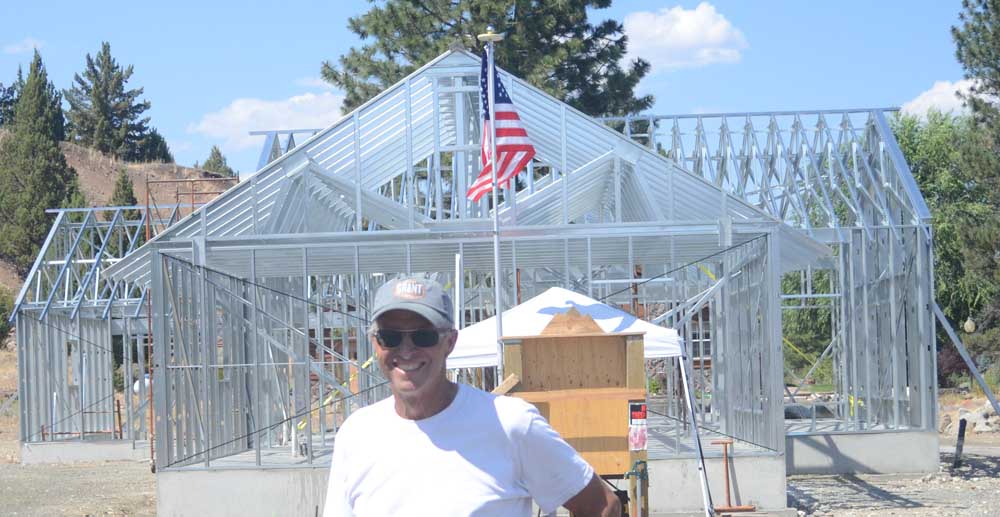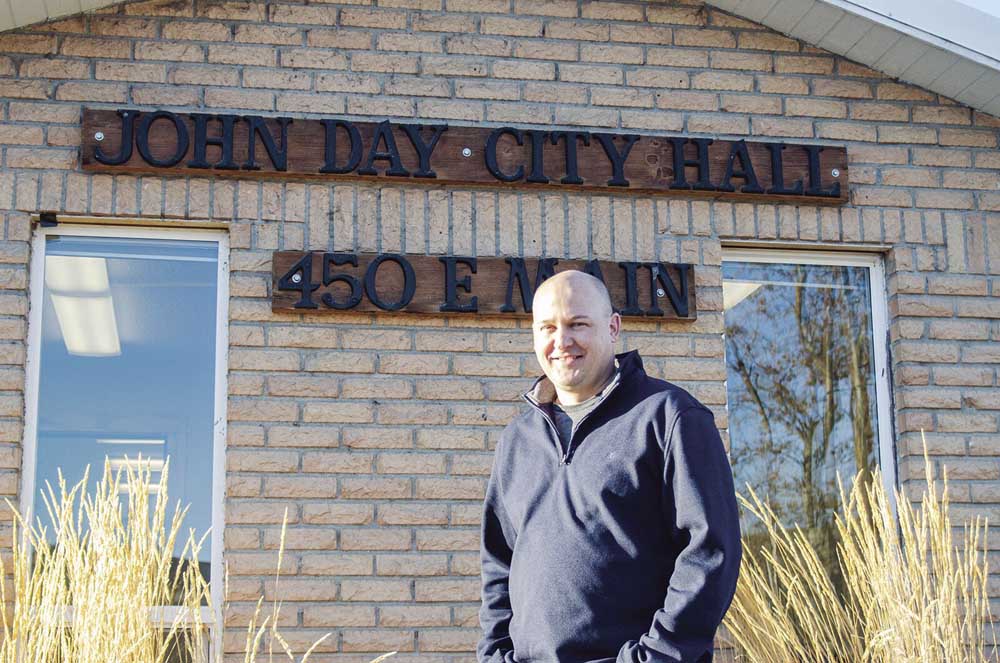Man of steel: Local homebuilder touts benefits of steel-frame construction
Published 8:00 am Wednesday, October 13, 2021

- Bruce Ward stands in front of a steel-framed house under construction. Ward, who owns Sunrise Construction Specialties, is a longtime evangelist for the fire-resistant construction technique.
As wildfires in Oregon become more frequent and destructive, residents in at-risk areas, including Grant County, have begun to explore ways to keep their homes safe.
With hot, dry summers now a fact of life, an increasing number of the county’s new homeowners have opted for steel-framed, fire-resistant homes.
Grant County resident Bruce Ward, who owns Sunrise Construction Specialties with his wife, Kimberly, has been building steel-framed homes for decades.
In fact, he is somewhat of an evangelist for the construction technique. For five years in the early 1990s, Ward hosted seminars across the country on the benefits of steel houses after spending the first part of his career at a steel plant in Salem.
Ward said he branched out on his own as lumber prices shot up and people started to consider building steel-framed homes.
Ward said he started out building spec houses on the weekends and noticed that he was frequently getting calls with questions about steel-framed homes.
“I was on the phone every night for hours giving away information,” he said. “I felt this could be a (trend).”
Later, Ward said, he was recruited by the head of U.S. Steel and teamed up with an engineer from a national research center to conduct weekly seminars around the country for five years and later across the globe, to Europe and Japan.
Ward said he went on to work with a structural engineer from Oregon State University to develop a steel roof truss for a project in Hawaii.
He said part of the reason the project’s builders opted for a steel frame was that termites were a significant problem in Hawaii.
Termite resistance is “one of the side benefits” of framing with steel, he said.
“I’ve had several people I’ve built houses for over the years say to me, ‘We don’t have any bugs in our house,’ and I’ve told them, ‘Well, there’s nothing for them to burrow into,’” Ward said.
The overriding benefit of a steel-framed home, Ward said, is its resistance to fires and other natural disasters.
“The components in my house are not going to fuel a fire,” Ward said. For example, he told the Eagle, a faulty electrical box inside a wall, a common cause of house fires, would not burn in a steel-framed home. Within an interior wall, with fire-resistant studs on each side, he said the fire has nowhere to go. Indeed, Ward said no home is 100% fireproof.
In addition, Ward said, he uses non-combustible building materials, metal roofs and roof sheathing products.
Larry Williams, executive director of the Steel Framing Industry Association, said with a steel-framed home, provided the fire can be kept outside of the building envelope, then the most important consideration is how much combustible material is inside the structure.
“In the event the flame reaches inside the home, you can expect contents that can burn will burn,” Williams said. “And that includes wood framing.”
Ward added that no house is fireproof.
“Once it gets into your house and gets into your furnishings,” Ward said, “you know you’re in trouble.”
Ward said after 30 years of touting the benefits of fire-resistant homebuilding techniques, people are starting to hear the message.
“Now the West Coast burned up,” he said. “Now we have global warming.”
Steel-framed vs. wood-framed
While steel framing historically has been more expensive than building with wooden 2-by-4s, wood’s cost advantage has shrunk considerably of late, according to Larry Williams, executive director of the Steel Framing Industry Association.
Williams said a pre-COVID-era study done by the SFIA found that a steel-framed house would cost about $1 per square foot more than one framed with wood, which for a 2,594-square-foot house would translate to an additional $2,594 on a basic home costing $296,652 to build.
Since then, however, skyrocketing lumber costs have changed the calculation for the foreseeable future.
Typically, wood prices have ranged between $300 and $500 per 1,000 board feet, Williams said.
But earlier this year, he pointed out, a cost analysis from the National Association of Home Builders found that framing lumber prices had hit all-time highs of $1,600 per 1,000 board feet.
Prices receded over the summer, Williams noted, but last week they were $676 per 1,000 board foot, significantly higher than the historical norms.
Williams noted that framing costs are typically around 17% of the total cost of building a home, so considering the total cost of construction, framing with steel has minimal impact on the pocketbook.
Up to now, the primary market for steel framing has been midrise buildings such as apartment complexes and hotels. But Williams said megafires in California, coupled with soaring lumber costs, have prompted an uptick in interest in steel framing for residential construction from across the country.
Apparently, interest has risen enough to keep Ward plenty busy. So far this year, the steel-loving homebuilder has built six houses in Grant County.





